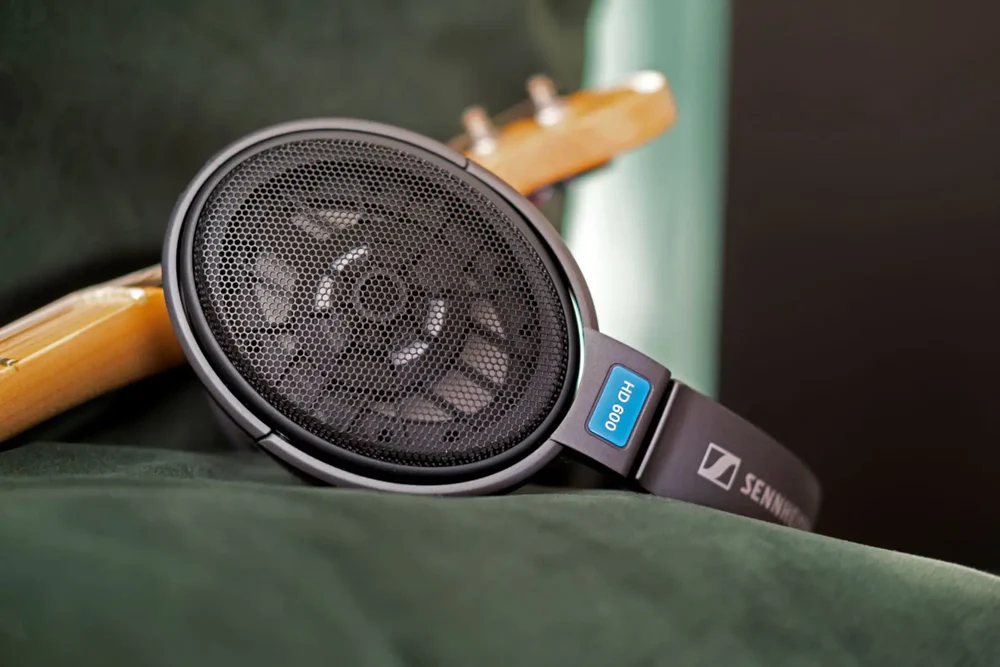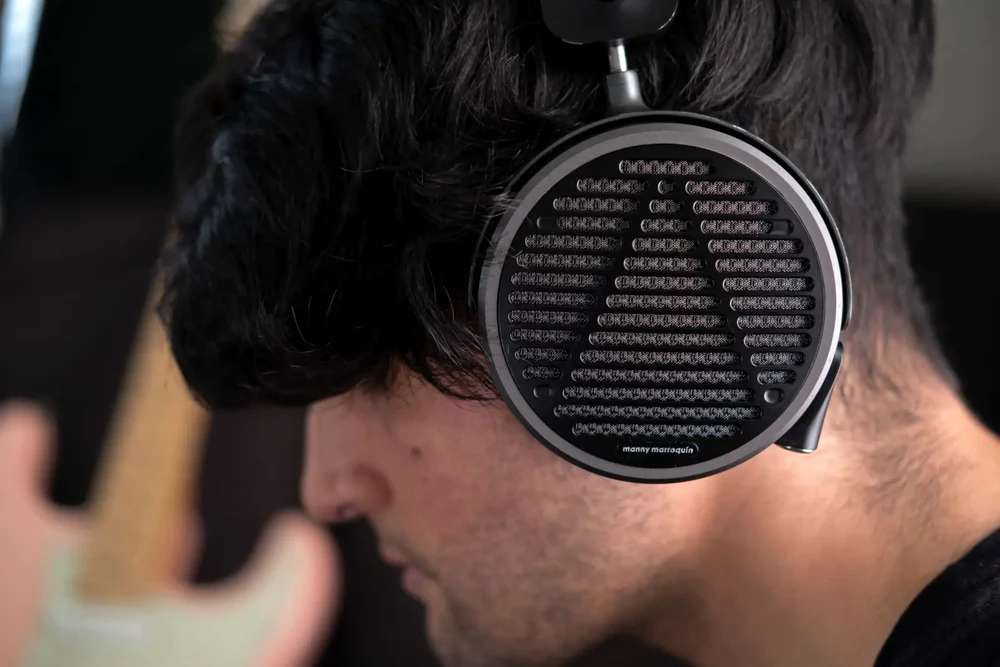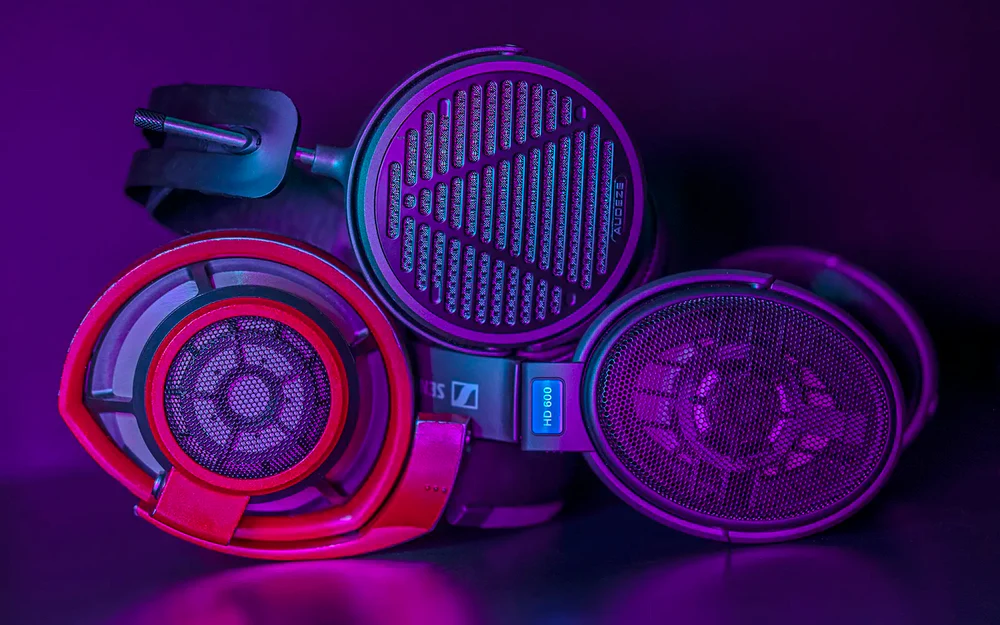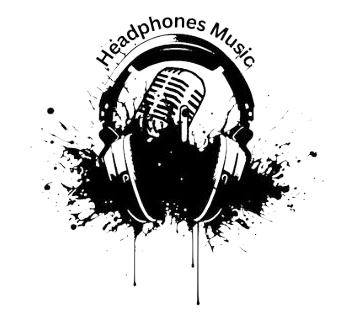Best Headphones for Mixing Audio (2024)

Best Headphones for Mixing Audio (2024)
If you’ve spent any time in the pro audio or audiophile communities, the term may seem a little confusing. I am aware of your likely thoughts.
(Pikachu’s shocked expression): “What? Using headphones when mixing? Isn’t it best to mix just with speakers?
Although the standard response has always been, “Yes, you should do the majority of your mixing in speakers,” I’ve long believed that there are strong arguments in favor of doing a sizable portion of the mix in headphones. Those arguments have only grown stronger over time as consumer listening time has shifted away from 2-channel and toward headphone listening.
As I have over ten years of experience mixing and composing audio in various settings (studios, live performances, podcasts, etc.), I feel well-equipped to make these points. I will start by discussing the reasons of not mixing in headphones. After that, I’ll explain why I believe you should still do it and discuss my top picks for work headphones, including their advantages and disadvantages.
List of shouldh t Mix Headphones
Why You Shouldn’t Mix on Headphones
It is a simple fact that all music was mixed in stereo up until the last ten or so years. Not only does “left and right” mean “stereo,” but also “based on a left and right speaker in the same room as the listener.”
This distinction is important since we never actually listen to stereo when using headphones. We are listening to the result of roughly and carelessly squeezing a proper 2-channel stereo mix into a binaural listening device. Thus, we get to the primary argument against mixing in headphones: A good two channel stereo system has no consistent link with spatial cues in headphones.

An essential weapon in the arsenal of an audio mixer is “panning,” which establishes the degree to which an object is positioned to the left or right. The degree of the volume difference between the left and right channels determines how far anything is panned to the right or left. This is accomplished by altering the volume difference between the two channels. A signal will sound skewed to the right if the volume in the right channel is higher than the left channel, and vice versa.
Not only does the panning that creates stereo cues translate counterintuitively to headphones, but there also appears to be a significant variation in perceived panning/separation between different headphones models. Nobody could argue that speakers and headphones have quite different images, but headphones and IEMs have a completely different image. These factors mean that judgments regarding spatial mixing must always be made while wearing headphones and a large grain of salt.
Why You Should Mix on Headphones
Now that we have that major disclaimer out of the way, I genuinely believe that headphones can handle most other parts of audio mixing reasonably well, including editing, dynamic balancing, tone balance, and sound effects. In some of these areas, they might even be superior to speakers!
For example, headphones work far better at bringing attention to errors in the music when editing and searching for issues we’d prefer listeners not to hear. Naturally, this is because headphones are much closer to the ear, and most of them also have some degree of isolation, which lowers the noise floor and improves signal full-stop discernment.
Furthermore, I’ve discovered that high-quality headphones (such as those listed above) are just plainly more tuned in terms of frequency response than most speakers. Particularly when you take into account that the majority of speakers in the majority of untreated or sparsely treated rooms are utterly plagued by extreme fluctuations in SPL below 1 kHz because of room modes.

The advantages never end! One could argue that mixing for headphones should take precedence over 2-channel stereo mixing as the majority of people these days listen to music through headphones and earbuds. Headphones are undoubtedly going to be the more often used peripheral if you’re trying to tailor a mix for the precise listening experience of your audience.
Practical considerations are another issue. Undoubtedly, studio monitoring speakers occupy a significantly larger area compared to a standard set of headphones. Additionally, they won’t wake up your partner or roommate who is sleeping in the next room, which is something that most audio mixers don’t do. Instead, folks like myself stay up late adjusting compressor settings.
What Are the Best Mixing Headphones (No EQ)?
There are undoubtedly advantages to mixing while wearing headphones, but only if you pick the appropriate ones!
My choice for the finest studio headphone without EQ is one of the few that has influenced pro audio as much as the audiophile market, which may come as no surprise to anyone.
Sennheiser HD 650 and HD 600
The most realistic, “good speaker”-like midrange in headphones currently on the market is still found in the HD 600 and HD 650 models. The HD 600 has been at or near the center of the conversation about headphones to mix since it was released in 1997, making it the current standard in midrange faithfulness. After all this time, it is still the standard suggestion, which gives me the confidence that many mix and mastering engineers consider the HD 600/650’s midrange to be the sound of “correctness.” Not to mention that the treble has one of the more seamless presentations of any headset out there.

Second, they are among the most reasonably priced, sturdy, and comfy (at least for me) pairs of headphones available. When compared to popular studio workhorses such as the Sony MDR7506, Beyerdynamic DT770, and Audio-Technica ATH-M50x, they are unquestionably much more comfortable.
Although I personally love the HD 600/650 for both professional audio work and recreational listening, they are undoubtedly not flawless due to at least two issues.
First off, in contrast to most headphone pads, theirs wears extremely quickly. By three months, they will be distinctly smushed if you use them for several hours each day.
Finally, they abruptly stop about 100 Hz in the bass range. Their greatest drawback for this purpose is that it renders them almost useless (by themselves) for a wide range of contemporary genres, including hip hop, R&B, and the majority of electronic music genres.
On the other hand, I believe the HD 600 is the greatest headset you can use for mixing without EQ if you’re mixing acoustic music, such as rock, singer/songwriter, country, indie, folk, or classical.

Audeze MM-500
When it comes to audio mixing, the Audeze MM-500 is an excellent option if you require bass extension but do not want to experiment with EQ.
Cost is a major drawback for the MM-500, though. A subwoofer, measuring microphone, room treatment, and some genuinely amazing studio monitoring speakers may all be purchased at $1699 in addition to the speakers. Although I really enjoy using the MM-500, a potential issue is that many people find the comfort inconsistent because of the device’s extremely tight grip force. I feel it’s important to bring up comfort since I genuinely think it’s an underrepresented metric in our community discourse.
Lastly, I believe that the MM-500 isn’t exactly ideal for assessing adjustments to elements that token dynamic range (using compressors/expanders, as well as delay/reverb), even if you did EQ it. It does a good job of drawing attention to the attack and even extracting more subtlety there, but in my experience, decay’s relationship to speakers is a little erratic.
Having said that, it is still extremely good in this regard, even though I don’t think the treble or midrange are quite as nice as the HD 600 and 650. I would even say that the MM-500 is a more adaptable headphone overall for this work because of the bass extension.

Audio professionals are the target market for the MM-500, and I believe the value proposition they provide is fair.
Particularly when you think of how portable a device with speaker-like midrange, complete bass extension, and smooth (ish) treble may be for usage in studios, hotels, and tour buses—anywhere you don’t want the sound to adjust according on where you are in relation to the speakers.
Both are great choices; however, I believe that the HD 600 and 650 are the more easily available models, coming in at around a sixth of the price, and as such, need to be the first choices made by consumers looking for headphones for mix referencing.
You might be wondering why I’ve bothered to bring out that my initial set of recommendations lacked EQ. The answer is straightforward: Even if this is intended for a particular class of listeners who are fully conversant in EQ, it’s possible that they are unaware of how to EQ their headphones!
Headphone EQ involves a distinct set of best practices, objectives, and obstacles to overcome in order to achieve those objectives. In fact, it took me a few years—roughly one-fifth as long as I had previously worked in professional audio—to fully grasp how to strike a balance between the constraints of headphone EQ and produce sufficiently “referential” sound.
I believe the solution might once more be clear if EQ is taken into account. Typically utilized as a reference, it’s maybe one of the few other open-back headphones with a ten-year history in studios.

Sennheiser HD 800 and HD 800S
The Sennheiser HD 800S, in comparison, isn’t actually the king of anything to do with its tuning, but the HD 600 is the king of midrange accuracy. Its treble is somewhat harsh and difficult to enjoy in its standard configuration, and it lacks linear bass extension and a particularly lifelike midrange.
Notwithstanding its tonal shortcomings, the HD 800S stands out as the finest mixing headphone available for use with equalization.
Because of extremely strict production tolerances, this beautifully constructed, professional-grade product has some of the lowest unit variation in the whole headphone industry. Its incredibly spacious earcups almost solve the issue of pinna, or outer-ear, deformation, which can also significantly alter sound quality between individuals.
That being said, because of its exceptionally low acoustic output impedance (it reacts very little to the “load” presented by the ear), the constancy of tone response on various heads is also among the greatest in the world.
For a (very) open-backed dynamic driver headphone, the HD 800S likewise boasts remarkably little harmonic distortion in the bass, making it simple to EQ the bass up for complete linear extension or even a bass shelf.
Together, these attributes make the HD 800S one of the few headphones available where, provided the measurement is made on an industry-standard measurement rig and customized by ear above 4-5kHz, you really don’t have to worry that your EQ corrections may not be accurate based on someone else’s measurement of the same type (but not same unit) of headphones.

With the help of a publicly available EQ profile, such as this measurement from our own Resolve, anyone with an HD 800S can (and probably should) have the tonal character of a well-maintained, high-quality speaker setup on their head almost anytime they want.
It’s rather difficult to come up with many caveats for the HD 800S for this work. My issues with the sound are nearly all resolved by EQ, and the build and comfort are among of the best on the headphone market.
While EQing an HD 800S can be applied to any type of music, it is most suitable for acoustic music. When EQ is taken into account, it’s the most adaptable option on this list, and I always use it when I launch Logic Pro X to work on music because it combines all of these sonic features with a comfort level that surpasses that of its sister HD 6×0 series.
Conclusion
Naturally, I continue to strongly recommend that a significant portion of the mixing process be done through the use of studio monitor speakers. Depending on the headphones you choose, I find that evaluating dynamics can also be very subjective. Panning is still a major problem with headphones.

Having said that, I believe that our current situation differs greatly from that of 20 years ago, when the maxim “never mix on headphones” was widely accepted. More people than ever are listening on headphones, and I don’t see this trend changing in the slightest.
Any mix engineer can make rapid, confident decisions with the best mix headphone, knowing that they won’t be caught off guard whether they check their mix on the main monitors, in the vehicle, or on their AirPods. An HD 600/650, MM-500, or a well-EQed HD 800 or HD 800S can, in my opinion, get most people halfway there for that set of needs.






